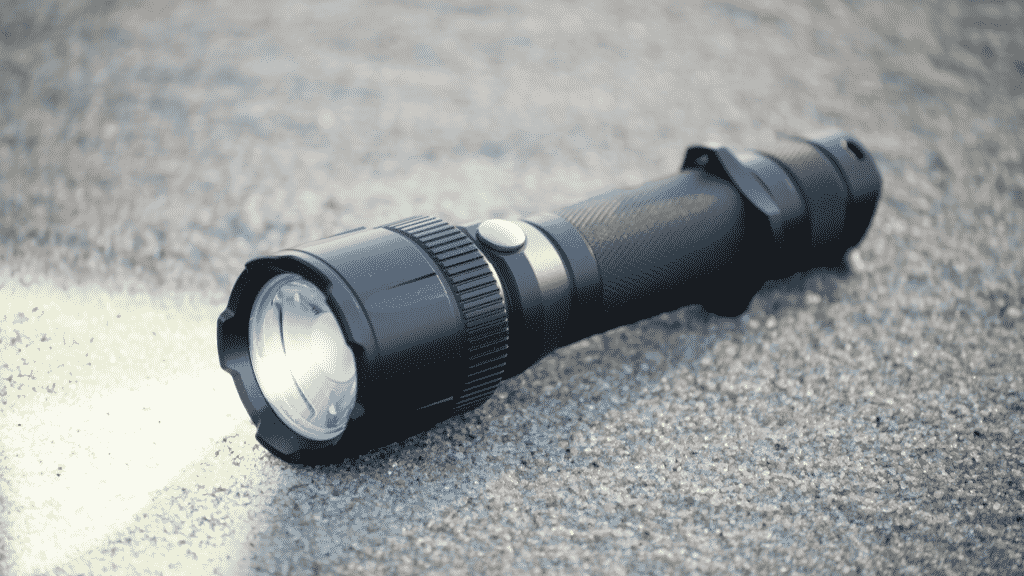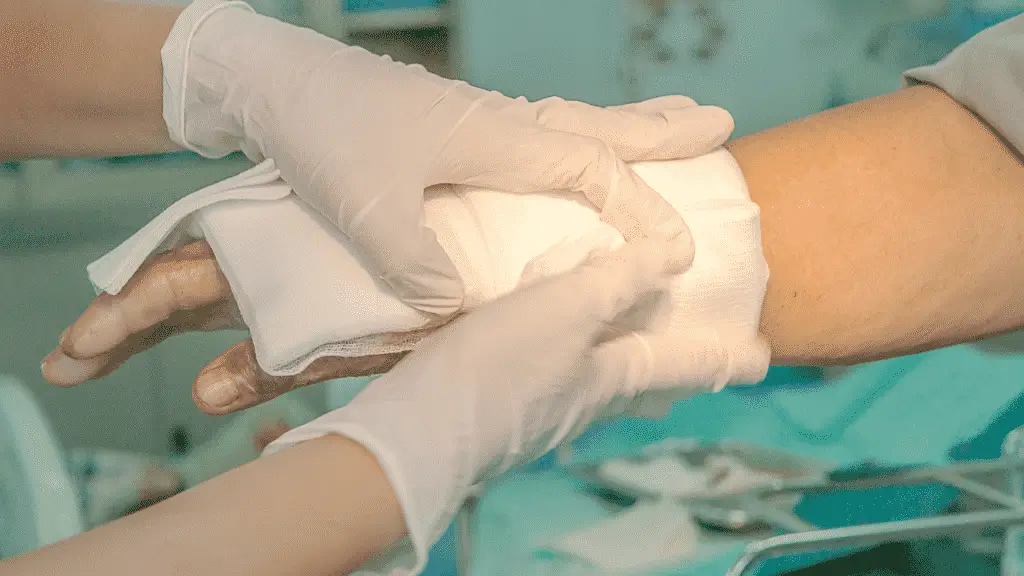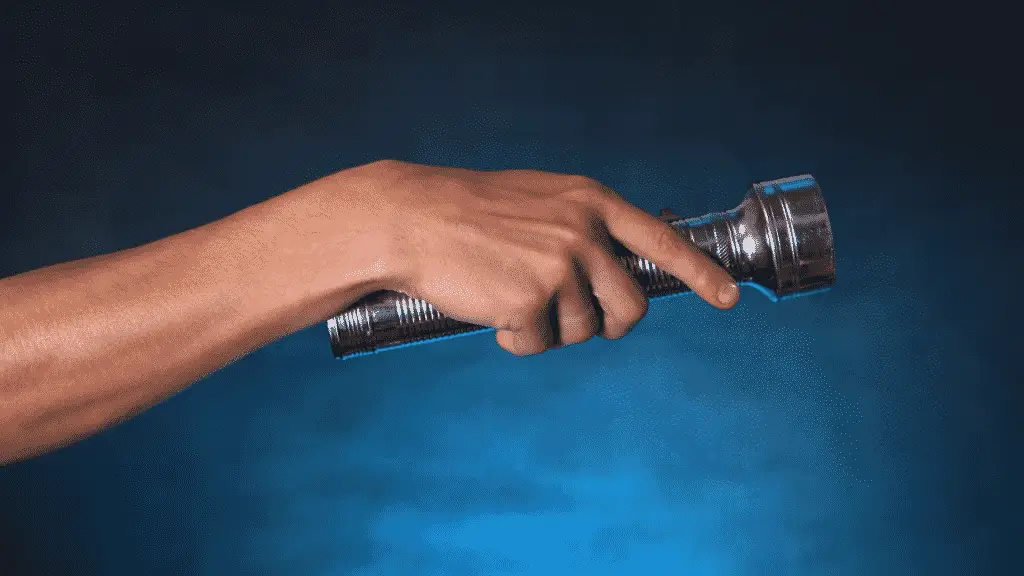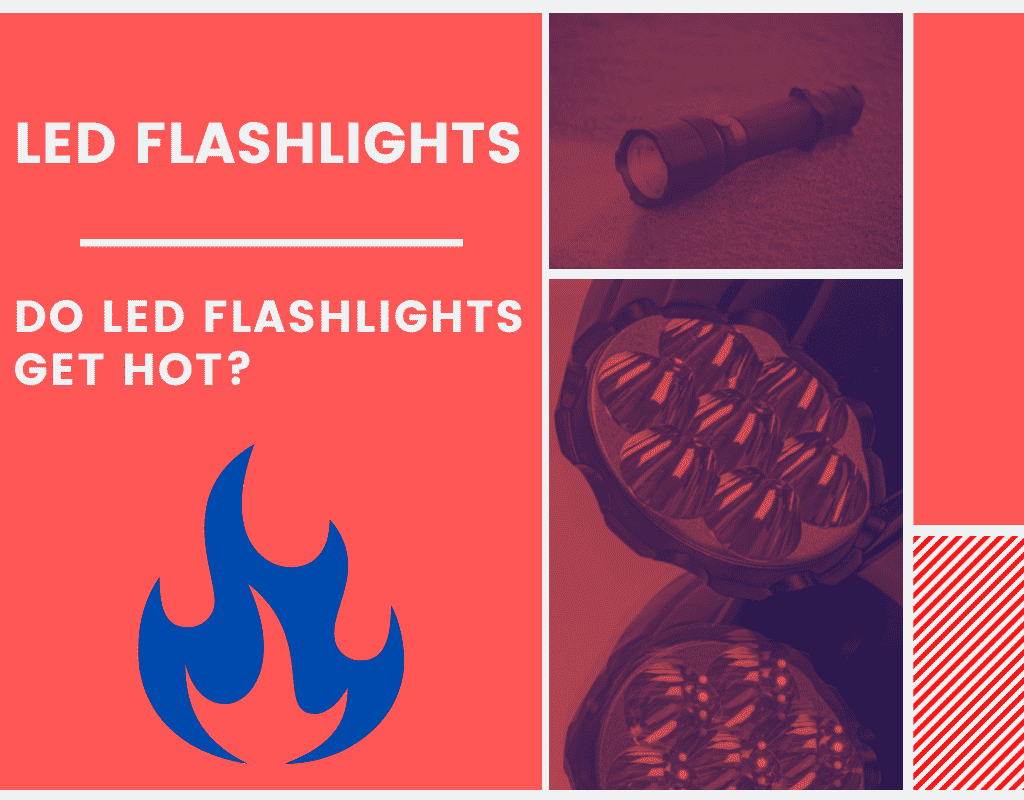Over the past 20 years, most flashlights have transitioned over to LED bulbs. LED bulbs are cost effective, more durable, have a longer battery life, and can offer more lumens in a compact package. Older incandescent/fluorescent style flashlight bulbs would heat up fast, but what about modern LED flashlights?
Do LED Flashlights Get Hot? It’s normal for LED Flashlights to get hot if driven hard enough. A little bit of heat on the end of an LED flashlight is actually a good sign, since it means the heat is being pulled away from the sensitive LEDs and electronics inside the flashlight. An led flashlight that’s too hot to hold isn’t normal and it will eventually lead to damage the LEDs/electronics.
All LED flashlights, regardless of color, will get hot when you’re using the maximum brightness setting over an extended period of time. A little bit of heat on the end of your LED flashlight is normal, but when does it become a problem?
In the rest of this post, I’ll explain how much heat you can expect an LED flashlight to have, go over a few ways to reduce heat, teach you how to diagnose problems and when it’s better to send the flashlight in for replacement/repair.
Why Do LED Flashlights Get Hot?

Contrary to some marketing claims, LED bulbs will generate heat just like anything else that consumes electricity. The main difference is that LEDs consume a lot less energy than incandescent/halogen bulbs and are much more energy efficient. LED flashlights use 25% of the energy of traditional incandescent bulb and 10% of the energy of halogen flashlights.
That reduction of energy will almost always result in an LED flashlight being cooler than traditional bulbs (they also have a longer battery life). The only time that might not be the case is if there’s a defect in the electronics that cause heat to build up. Y
The amount of heat an LED bulb produces is directly proportional to the amount of energy the flashlight uses. Using less energy will always result in a reduction of heat, but it won’t completely eliminate heat. LED flashlights will still generate heat, but there are ways to reduce the temperature. Here are a few ways that you can reduce LED flashlight temperature.
- Hold The Flashlight In Your Hand: Heat always transfers from warm places to the surrounding cold places. So holding a flashlight in your hand will transfer the heat away from the frame preventing overheating. Your body is a better heat conductor than the air so it will absorb heat and help speed up the heat transfer. No flashlight should be uncomfortably hot in your hand so that always means there’s an electronic issue that needs to be repaired.
- Turn Down The Brightness Setting: Almost every quality flashlight has multiple brightness modes. You should only use the brightest lumen setting when trying to spotlight objects at a distance (100+ meters). All you needs is the lowest setting (usually 60 lumens) to navigate a small room and medium/low setting (150-250 lumens) to walk outside at night.
- High Lumen LED Flashlights Heat Up Faster: As you increase the brightness of a flashlight (aka lumen value) it will use more energy. Using additional energy will always increase the amount of heat generated by the LEDs. going with a lower lumen flashlight/headlamp will reduce the amount of heat and increase the battery life of your flashlight. The vast majority of tasks require less than 250-350 lumens. You may need more lumens to spotlight objects past 100 meters, but high lumen designs usually aren’t necessary.
- Some Designs Are Better At Reducing LED Heat: Flashlight design plays an important role in reducing temperature, it’s not just a matter of aesthetics. LED flashlights with aluminum bodies, lots of fins, step down settings and larger heads help reduce heat.
Lets go over all of these factors so you can reduce led flashlight heat and pick out a quality design to reduce heat. Most high quality flashlight brands already use designs to reduce heat, but it should help you see why it’s worth paying an extra $15-$20 on a high quality flashlight.
LED Flashlight Ends Should Feel Warm To The Touch
It’s perfectly normal for the end of an LED flashlight to feel warm to the touch. That’s actually a good thing since it means that the flashlight is directing heat away from the sensitive electronics. An overheating body is a much bigger concern.
How hot the end of the flashlight will get depends on the design, brightness (aka lumen rating), and how you’re using the flashlight. Higher lumen flashlights and using the highest brightness settings will always increase the flashlight temperature (more energy=extra heat).
The end of LED flashlights with reasonable lumen ratings shouldn’t get so hot that they burn your hand. If a flashlight that’s under 1000 lumens is burning your hand that may mean there’s a problem with the design or electronics. Higher lumen flashlights will get much hotter when using max brightness.
LED Flashlights Shouldn’t Be So Hot That They’re Hard To Hold

A flashlight that’s too hot to hold in your hand is always a sign that there’s something wrong with the internal design in the flashlight. If a brand new led flashlight feels hot to the touch you should always return it and used flashlights that get too hot need to be repaired or replaced.
Flashlights that are so hot that they’re hard to hold usually means that there’s a short somewhere in the circuit. This can lead to a catastrophic failure where the flashlight overheats, and the battery catches fire or explodes. It’s mostly a concern with lithium batteries, but even standard AA/AAA alkaline batteries can explode.
Most name brand flashlights have lifetime warranties so you shouldn’t have any issues getting them repaired. Just send mail them to the manufacturer and they’ll ship you a replacement. They usually just send you a similar model flashlight and tell you to dispose of the old one.
If you’re on a tight budget, I highly recommend looking into Coast Flashlights. The designs aren’t as pretty as you get with premium manufacturers, but they perform way above their price point with a lifetime warranty. You get more out of a $10-$30 Coast flashlight than out of any of the other budget brands you see on Amazon or at local stores.
Holding The Flashlight Will Reduce LED Heat

Your body is a far better conductor of heat than the surrounding air. So holding a flashlight in your hand will help reduce heat buildup in the flashlight frame. Clipping a flashlight to your shirt or using a flashlight holder is convenient, but it will increase the heat.
That’s not a huge issue if you’re using a lower brightness setting, but it can cause issues at maximum brightness. Flashlights are usually held in a person’s hand so that’s factored into the design. It won’t be an issue with high quality flashlights, but it can pose problems with budget led flashlights.
Turn Down The Brightness Setting To Reduce Heat
Flashlights aren’t designed to be used on the brightest lumen setting for more than a few minutes. You’re supposed to turn it up to maximum brightness to spotlight far away objects and then turn the brightness down to conserve battery and reduce heat.
Premium designs use step down modes to deal with this problem, but you won’t find that on budget models. Leaving a cheap flashlight on the maximum brightness setting will cause overheating issues and drain the battery fast.
Design Factors That Affect LED Flashlight Heat
Flashlight design plays an important role in reducing the amount of heat generated by the bulb. Well designed flashlights will divert the heat through the flashlight body and through the head to reduce heat. Having a design that disperses heat is crucial to protecting the sensitive electronics and preventing overheating.
There are multiple factors that prevent an led flashlight from overheating. Aluminum body designs speed up heat transfer, flashlight fins direct heat away from the electronics, step down settings turn down the brightness to prevent overheating, and larger heads direct heat away from the led bulbs.



